PROTECT YOUR DNA WITH QUANTUM TECHNOLOGY
Orgo-Life the new way to the future Advertising by AdpathwayAlocasia plants are stunning both indoors and outside. They work well in partially shady borders of the yard, and they’re attractive houseplants in well-lit rooms. With regular irrigation, proper feeding, and sufficient light, they’ll sprout lush new leaves that arch up and over.
A well-lit window is the best spot for your alocasia. This plant will grow best with warm temperatures and high humidity. In cold climates, grow one in a large container and move it indoors for the winter, then outdoors for the growing season.
Many alocasia species grow corms underground. Corms resemble bulbs, and they’ll sprout new growth with proper care. If leaves fail to grow, you can always propagate the corms in jars of water to grow new specimens.
Alocasia species are easy to care for. Give them what they need to thrive, and they’ll reward you with new, healthy leaves and perky, strong stems. Follow these five tips to encourage your alocasia to grow new leaves no matter the season.
Rim Modern Self-Watering Planter
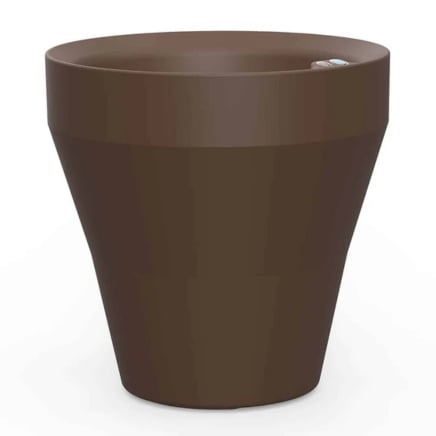
Rim Modern Self-Watering Planter
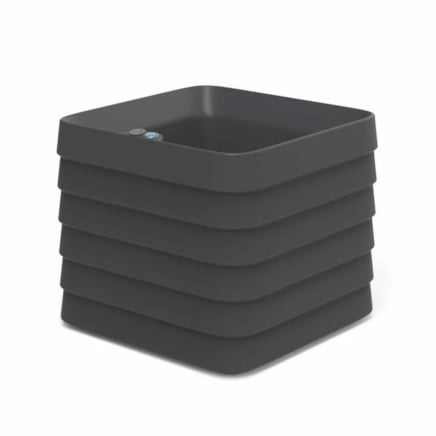
Slat 22” Square Box Planter

Marly’s Self-Watering Planter
Heat Up the Area
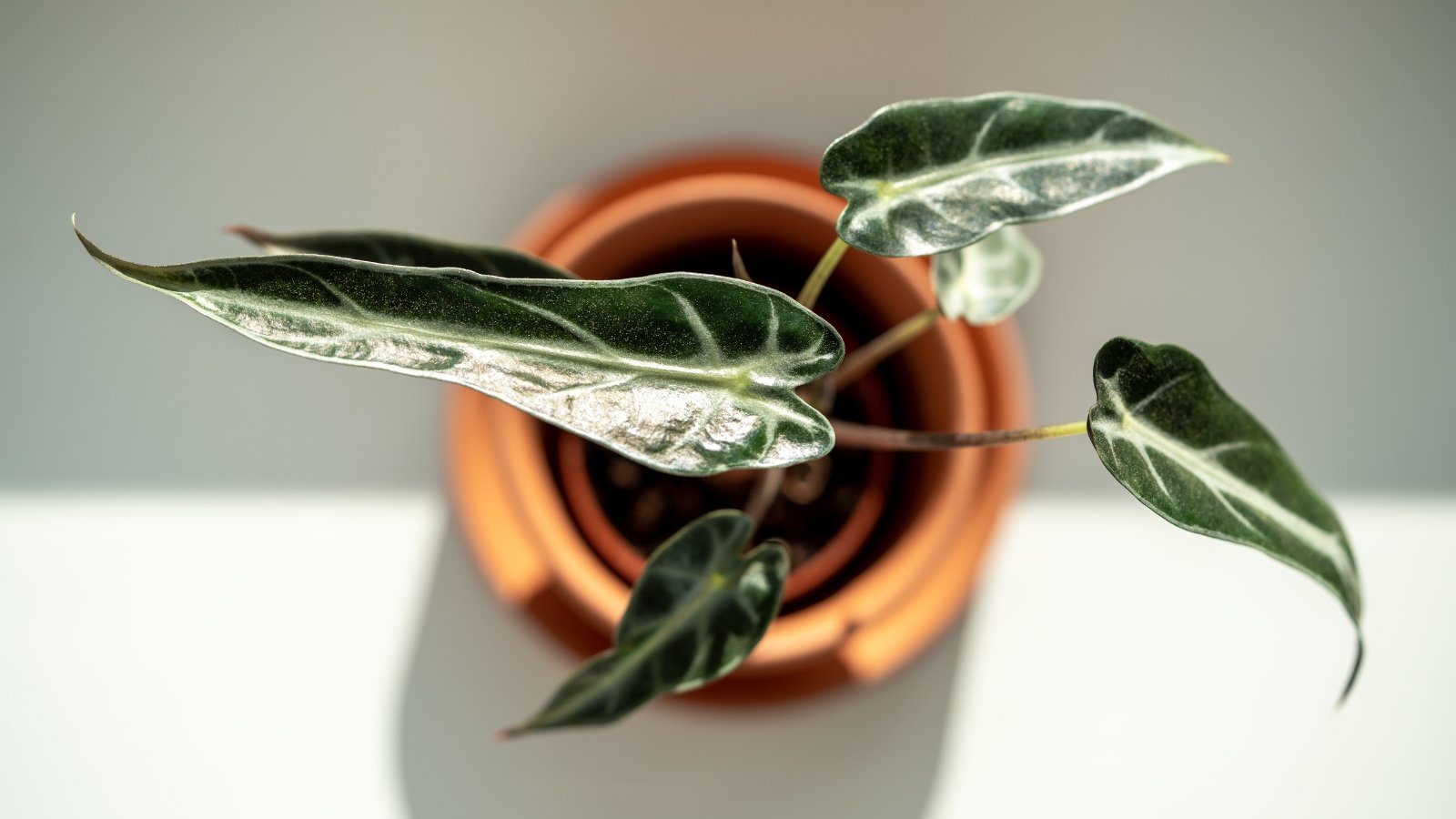 Dormancy begins when temperatures dip below 50°F.
Dormancy begins when temperatures dip below 50°F.Consider the temperature first. Cold weather causes alocasia plants to enter dormancy. Their lower leaves begin to wilt and wither, and one or two may remain on their stems. Or, the upper leaves will wither too, and the plant will enter full dormancy.
To discourage the dormant state, keep the plants under warm, humid conditions. Place them in a room with a heater, or set up a space heater nearby, but avoid putting the plant directly underneath or next to the heater. The arid air can dry out the leaves and cause them to wither.
If your potted plant is outside, begin moving it indoors before cold weather arrives in the fall. Do so well before the first average frost date. Once temperatures fall below 50°F (10°C), it’s a good idea to move your alocasia into the warmth of your home.
Adjust Watering
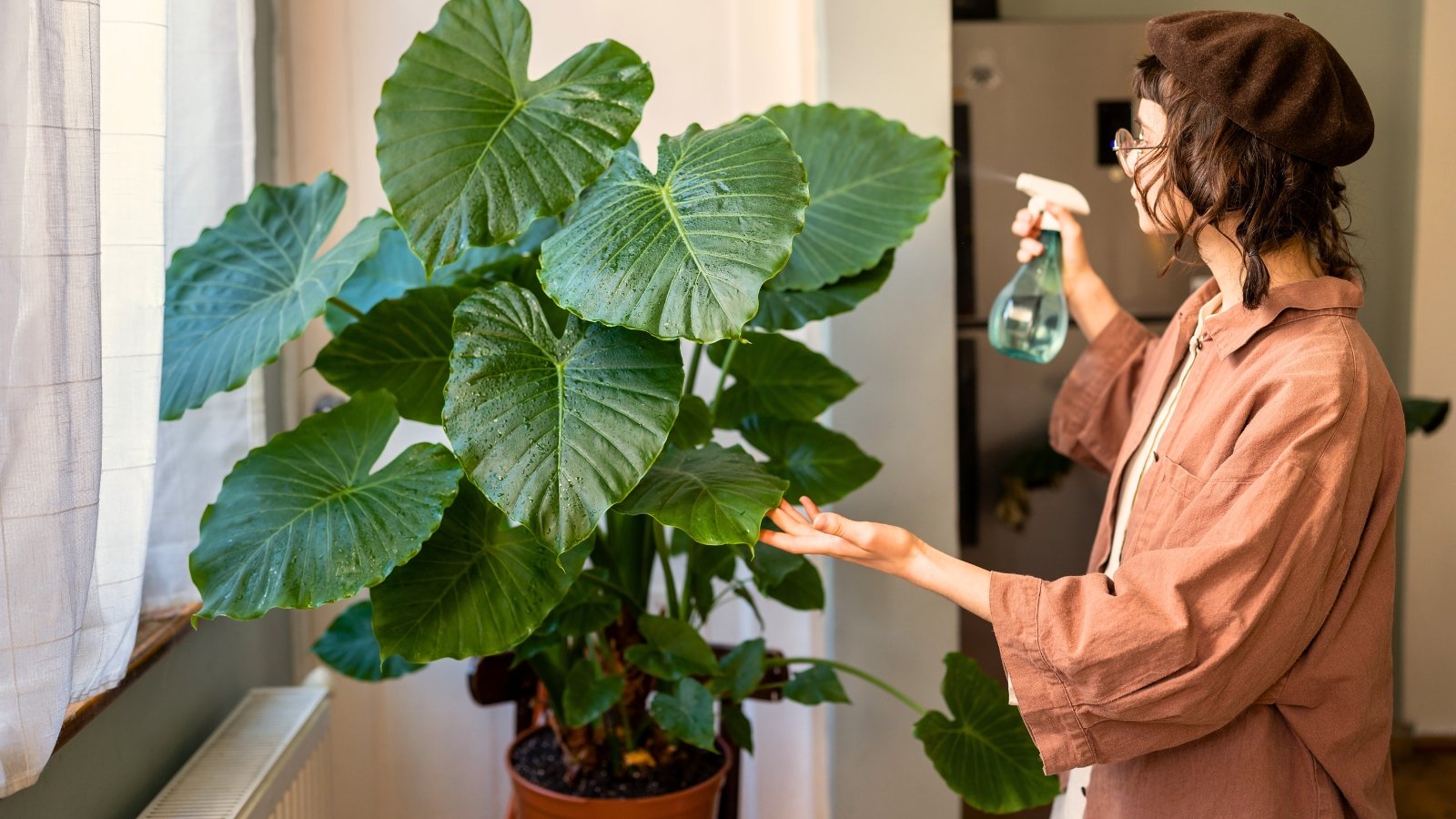 Healthy new leaves need both water and humidity.
Healthy new leaves need both water and humidity.Alocasia plants love moisture, and they need consistent watering to grow new, healthy leaves. Arid, dry conditions may cause them to enter a dormant state where the plants stop sprouting new growth. Keep them growing by watering them often to ensure their soil stays moist, but not soggy.
Alongside consistent moisture, ensure your specimens grow in humid conditions. Heaters tend to remove moisture from the air. To combat this, set up humidifiers throughout the room to increase the humidity levels.
Though alocasias appreciate moisture, they dislike soggy soils. Avoid overwatering by checking the soil. Stick your finger beneath the surface, then see if it’s dry or wet underneath. If it’s wet, wait a day or two before checking again.
Improve the Light
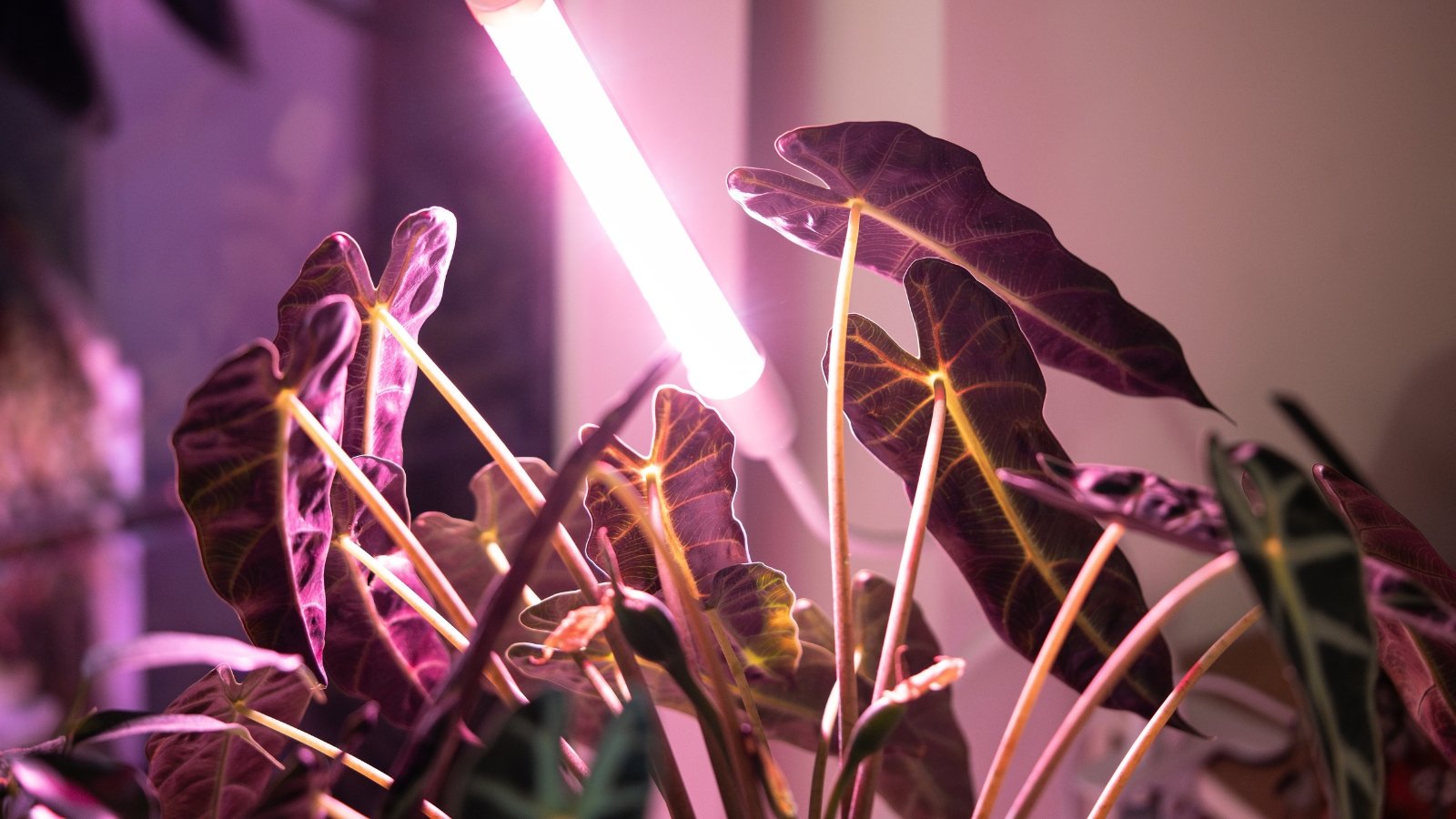 Grow lights supplement sunlight when natural light is scarce.
Grow lights supplement sunlight when natural light is scarce.Light is essential for new alocasia leaves to grow, no matter the season. Many regions of the U.S. have short days in the winter with less light than in the summer, making this a difficult task. For lush growth, place your alocasia plant near a well-lit window with partial shade or bright, indirect light.
If your home lacks natural light, consider adding grow lights to boost the brightness. They’re cheap and easy to set up, especially LED options. Set them a foot or higher above the leaves to avoid burning, and cover the entire plant in the artificial light.
Outdoors, alocasia plants appreciate partial shade or dappled sunlight. Dark-leaved varieties need full sun for the best color and form. If you have a dark-leaved variety indoors, give it as much light as possible during the winter with natural or artificial light.
Add Some Nutrients
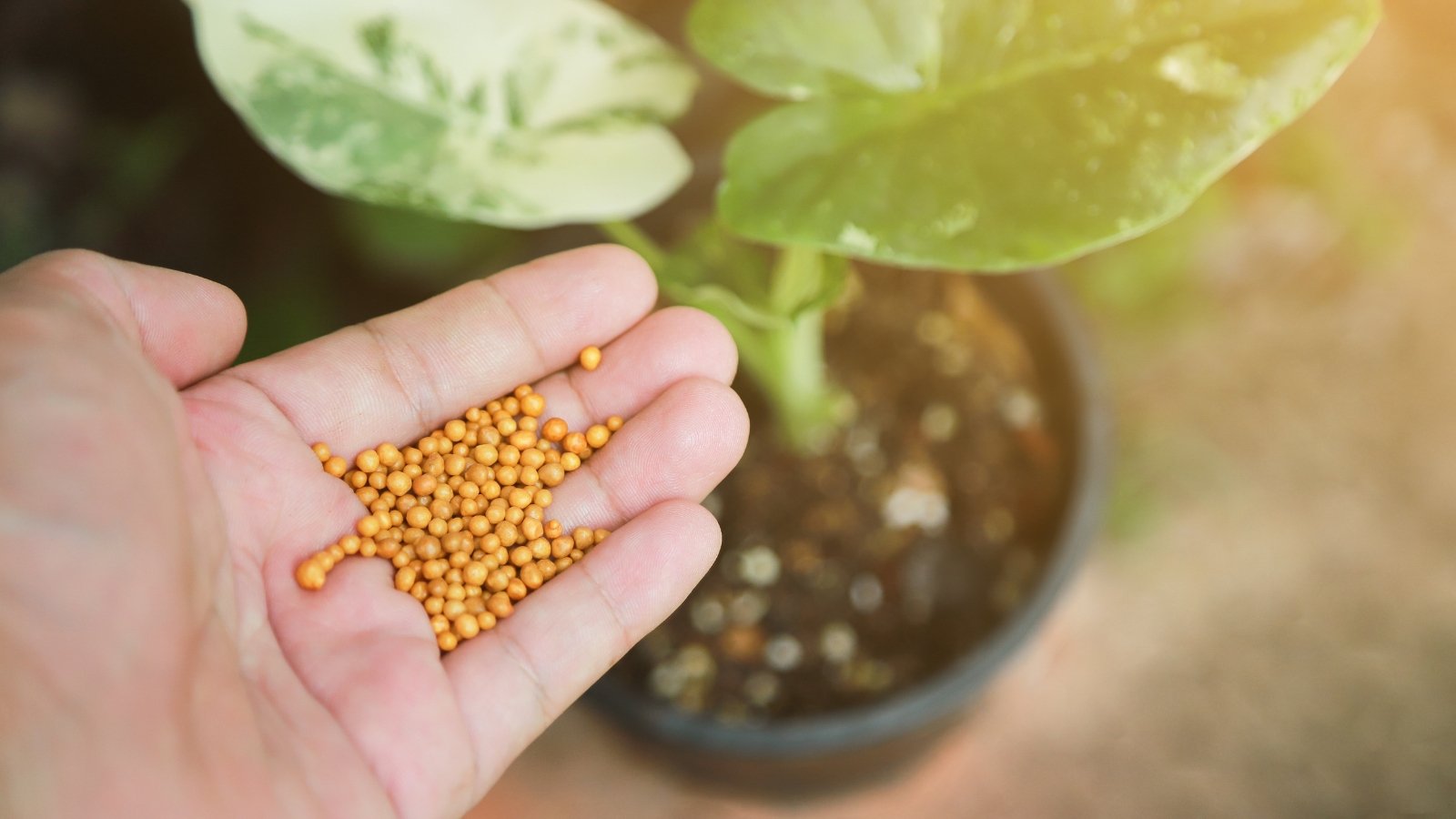 Avoid fertilizing when the plant enters the dormant season.
Avoid fertilizing when the plant enters the dormant season.Your alocasia needs plenty of nutrients while it’s growing. If it’s been in a container for longer than a year, chances are high that its soil is nutrient-deficient. Apply a high-nitrogen fertilizer during the growing season to encourage healthy new growth.
Outdoors, amend beds with compost to encourage your alocasia to produce new leaves. Do so regularly during the warm months to keep the mulch between two and three inches thick. It’ll feed the plants while also insulating and protecting them from harm.
The only time you’ll want to avoid fertilizing is during the dormant season. Start by heating the area, watering regularly, and increasing the brightness. Then, after new leaves grow, begin fertilizing monthly. Water the soil afterward, and wash any fertilizer that splashes on the leaves off to avoid burning them.
Repot the Plant
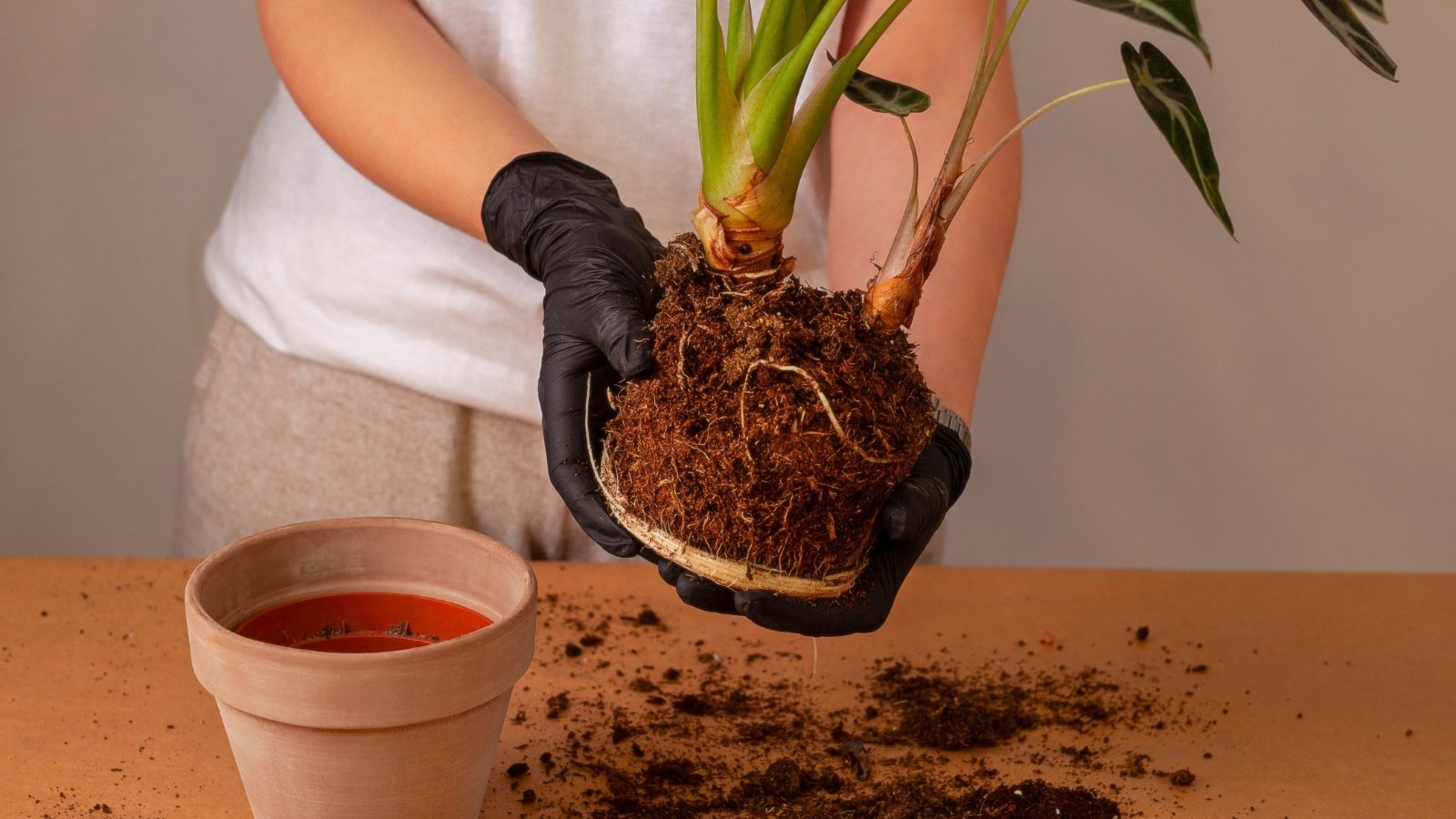 Repot every few years to avoid cramped roots.
Repot every few years to avoid cramped roots.A struggling alocasia may need repotting to have some breathing room for its roots. If the plant has multiple shoots, you may divide them while you’re repotting. A repot will encourage new root growth, which will, in turn, allow for bigger, healthier leaves.
To repot, start by removing your alocasia from its container. Loosen up the roots on the bottom and sides, and set the plant in a larger container with more soil. Use a well-draining mix that’s rich in nutrients. Cover the roots, water the plant, and set it in indirect, bright light while it establishes itself.
While repotting, if you notice multiple shoots are growing, use a sharp, sterile knife to separate them. Ensure each portion has healthy roots and leaves, and place each one in a new pot with fresh soil. Repot your plant every two to three years to give it more room to grow.
Key Takeaways
- New alocasia leaves grow when the weather is warm, humid, and sunny.
- Emulate proper growing conditions indoors with grow lights, heaters, and humidifiers.
- Alocasia plants may not need to overwinter indoors, depending on where you live. Some species survive the winter in USDA hardiness zones 8 and above, while others are frost-tender.
- Alocasia also goes by “elephant ears” due to the way its leaves look. There are many species and varieties available at garden centers, home improvement stores, and online.
Frequently Asked Questions
The plant sprouts new growth when the weather is warm and humid, and ample sunlight is present. Some species enter dormancy during the winter, while others are frost-tender.
The plant often sprouts new growth above the lower leaves, and the old ones wither away. A healthy, mature plant will put out a dozen or so leaves, depending on its size and type.
It’s likely in a dormant state because of a lack of sunlight, water, or warmth. Watch for yellow or brown leaves.


 1 day ago
2
1 day ago
2
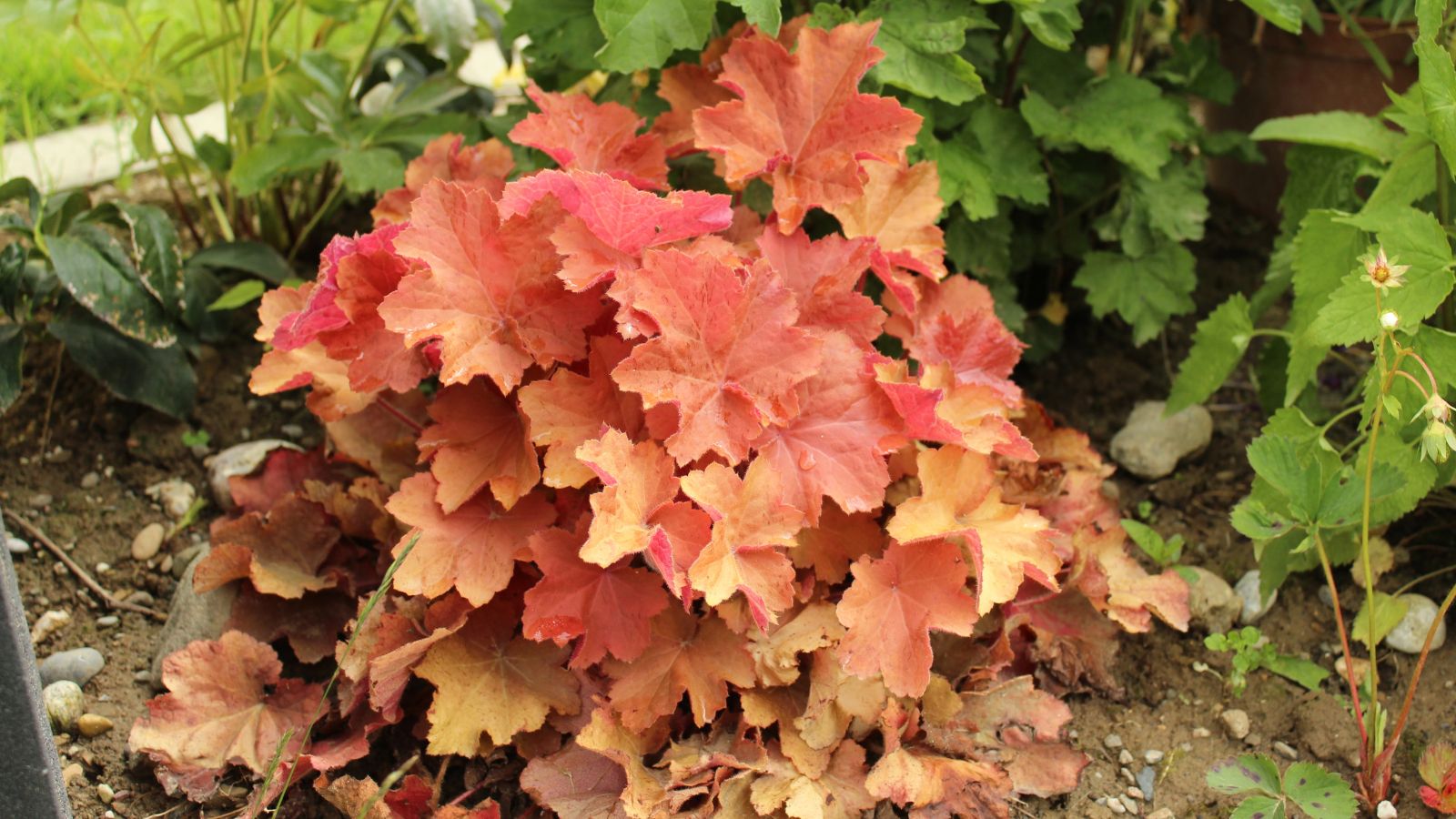
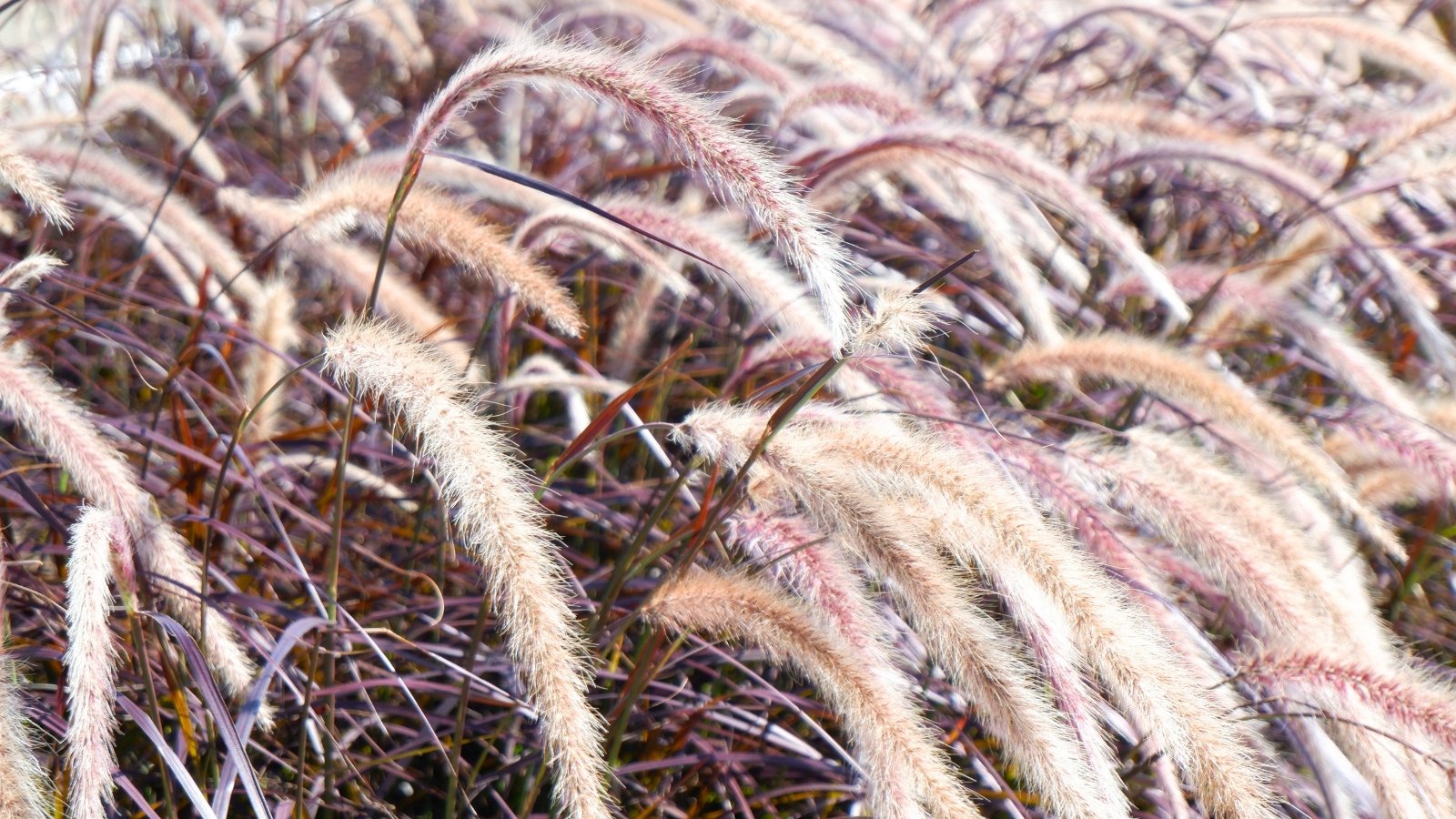

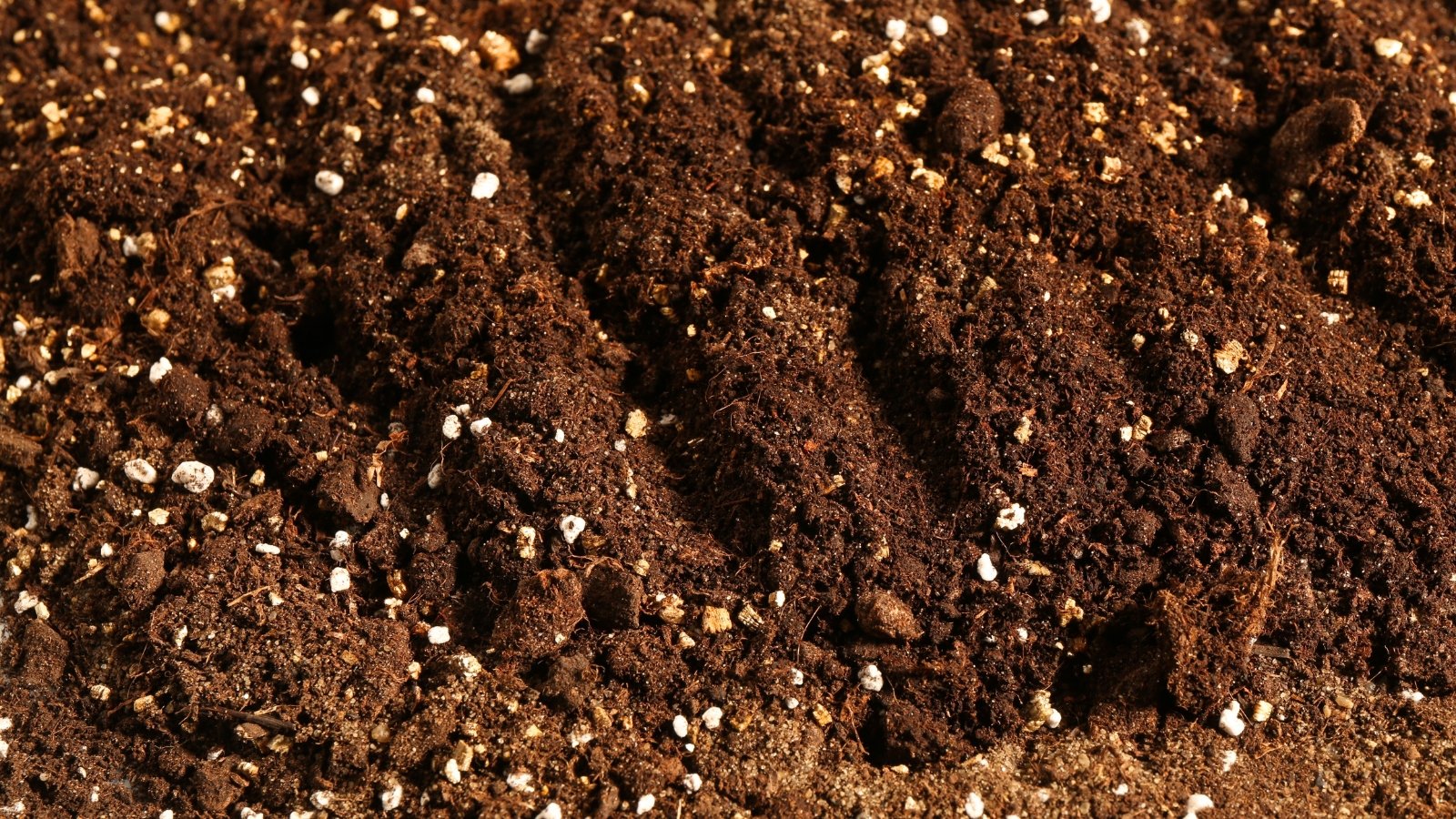
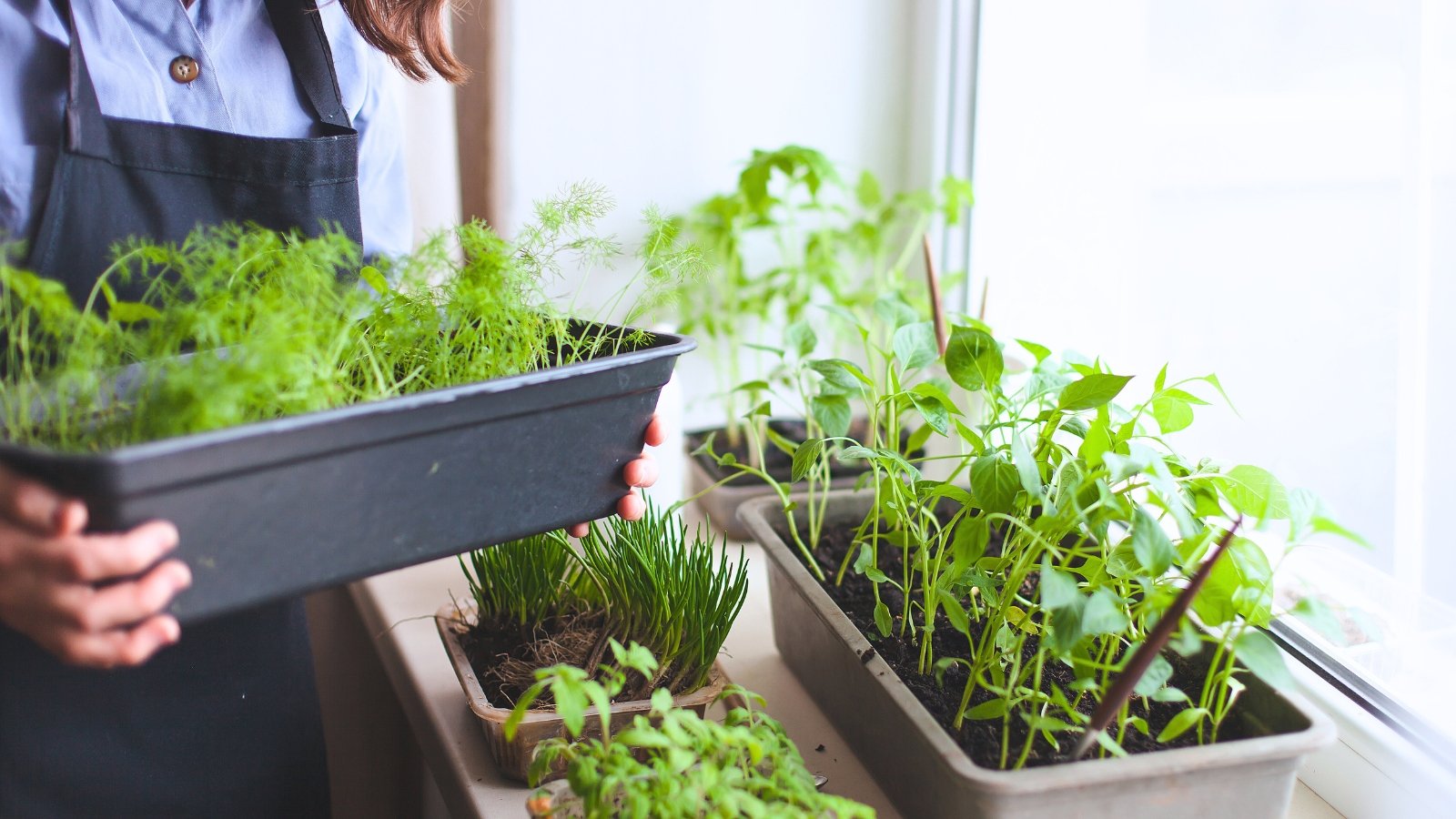
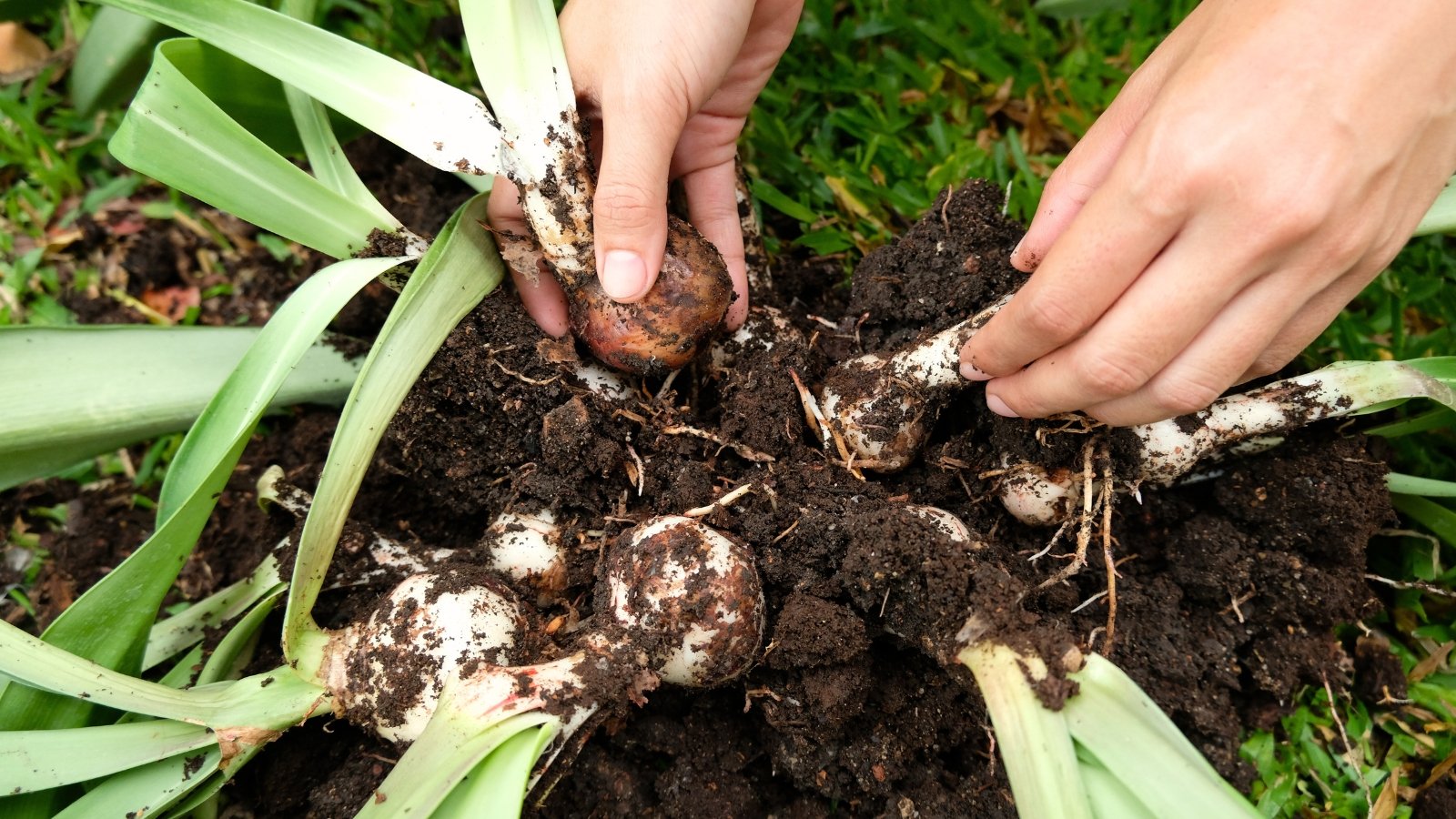















 English (US) ·
English (US) ·  French (CA) ·
French (CA) ·